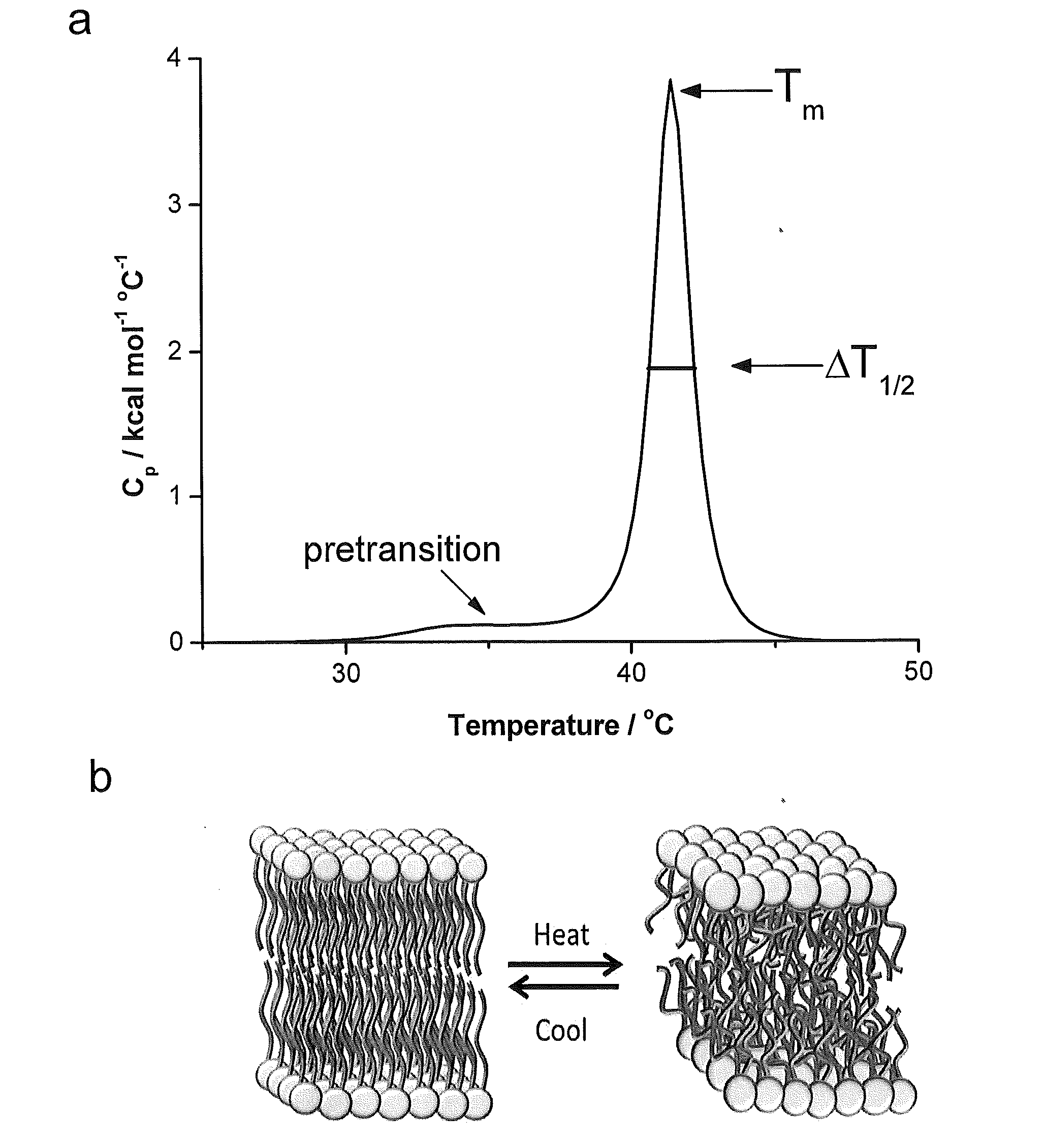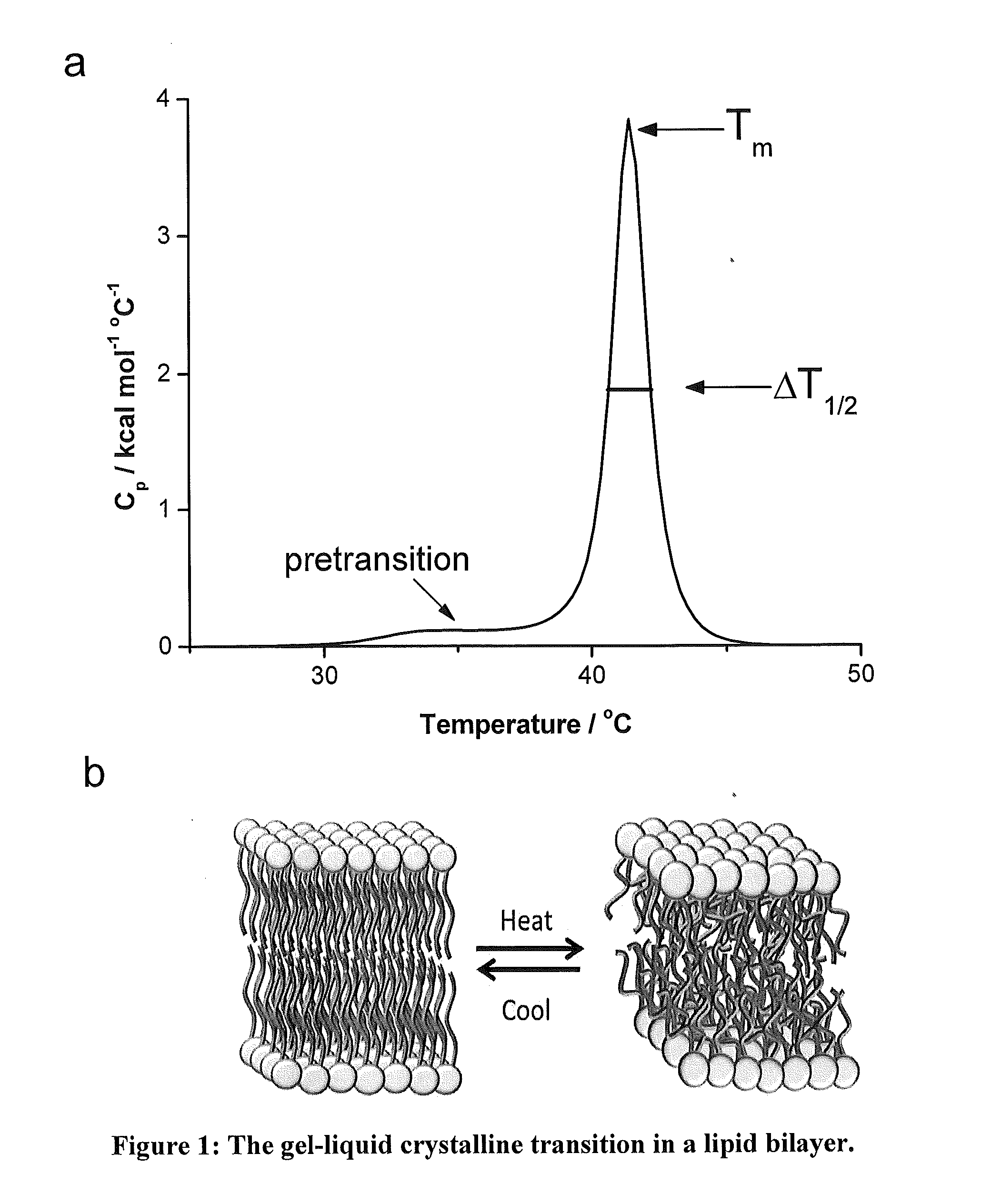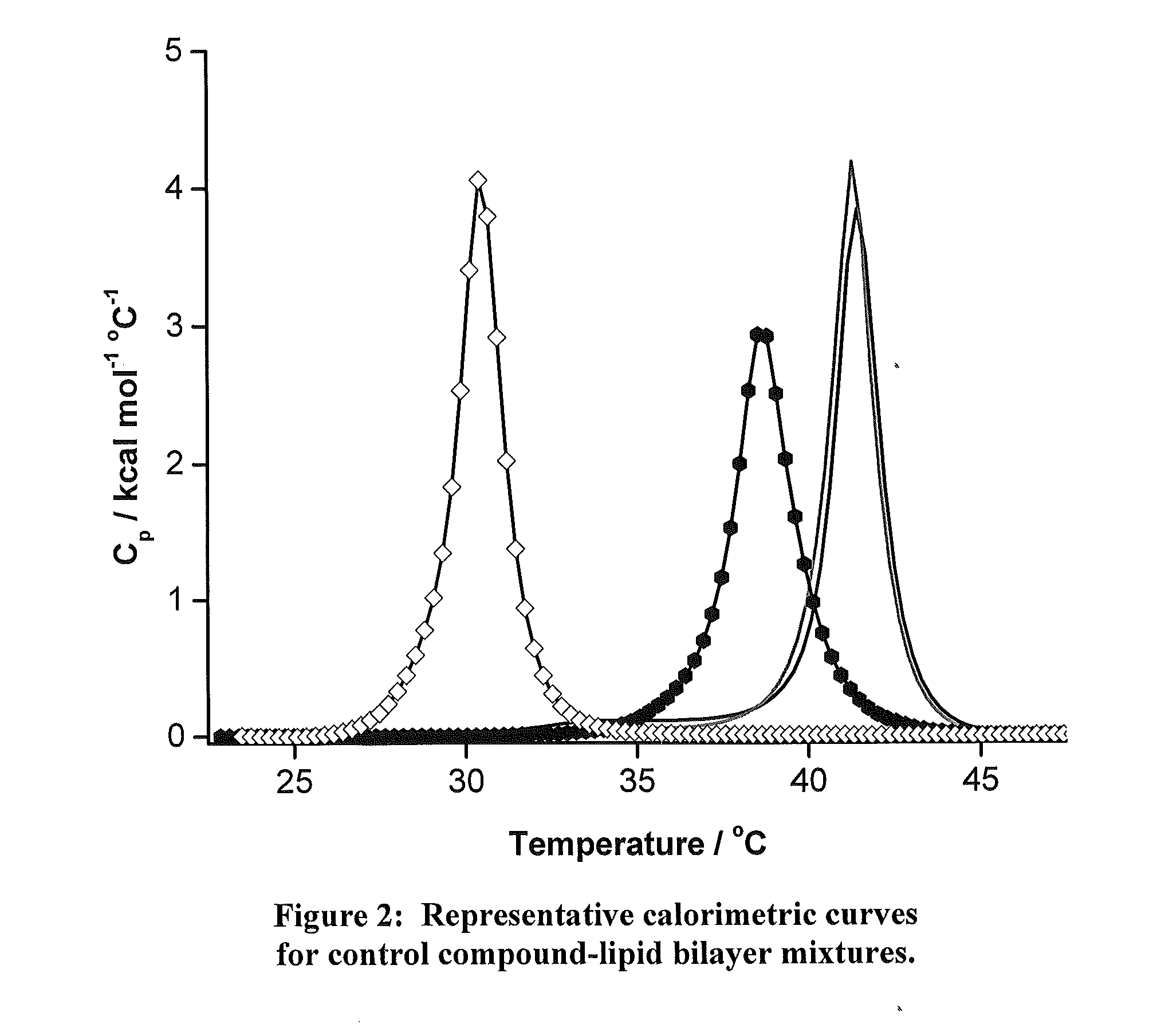Methods and compositions for the stabilization of biologic material
a biologic material and composition technology, applied in the field of methods and compositions for the stabilization of biologic materials, can solve the problems of high handling costs, insufficient preservation technology of biological constructs, and high cost of production, storage and transportation of these therapies
- Summary
- Abstract
- Description
- Claims
- Application Information
AI Technical Summary
Benefits of technology
Problems solved by technology
Method used
Image
Examples
example 1
A Screening Assay for Evaluating Toxic Cellular Interactions
[0039]To better understand the nature of specific interactions between ILs and biological interfaces, and the relationship between cytotoxicity and lipophilicity, we investigated the effect of these organic salts on the thermotropic phase behavior of model lipid membrane systems prepared from 1,2-dipalmitoyl-sn-glycero-3-phosphocholine (DPPC). Using calorimetric methods we examined the heat signals associated with the lamellar gel (Lβ) to lamellar liquid crystalline (Lα) phase transition of unilamellar vesicles prepared from DPPC. The temperature at which this event occurs can be described as the melting temperature (Tm) of the hydrocarbon chains, as shown in FIG. 1. Because of the tight packing and restricted mobility of hydrocarbon acyl chains in a bilayer arrangement, this transition from the all-trans conformation to the gauche conformation is a highly cooperative event (Taylor, 1995). Molecules that interact or interca...
example 2
Toxicity Screening of Additional Choline Salts
[0056]Microcalorimetric observation of the gel to liquid crystalline transition in small unilamellar vesicles of dipalmitoyl sn glycero phosphocholine (DPPC) treated with various choline salts at a concentration of 10 mM in the assay system described above was carried out. Results are given in Table 2 below.
TABLE 2Screening of choline salts in DPPC vesicle assay.Δ TmΔΔ T(1 / 2)ΔΔ HLogLog EC50Anion(C)(C)(cal / mole / C)Pow(uM)Dihydrogen+0.520.131−76−3.154.31PhosphateTartarate+0.35−0.03+121.903.04—Lactate+0.37−0.06−480−1.73—Formate+0.31−0.02−733−1.53—Levulinate−0.210.39−2155−1.18—Bis (2,2,4−−8.08−0.37−20113.602.39trimethylpentyl)Phosphinate (BTP)
For BTP, A large decrease in Tm and enthalpy, and increased cooperativity, was observed. For levulinate, a moderate decrease in Tm, and a large decrease in enthalpy, was observed. For lactate and formate, a moderate increase in Tm and a moderate decrease in enthalpy was observed.
[0057]Among other things...
PUM
 Login to View More
Login to View More Abstract
Description
Claims
Application Information
 Login to View More
Login to View More - R&D
- Intellectual Property
- Life Sciences
- Materials
- Tech Scout
- Unparalleled Data Quality
- Higher Quality Content
- 60% Fewer Hallucinations
Browse by: Latest US Patents, China's latest patents, Technical Efficacy Thesaurus, Application Domain, Technology Topic, Popular Technical Reports.
© 2025 PatSnap. All rights reserved.Legal|Privacy policy|Modern Slavery Act Transparency Statement|Sitemap|About US| Contact US: help@patsnap.com



